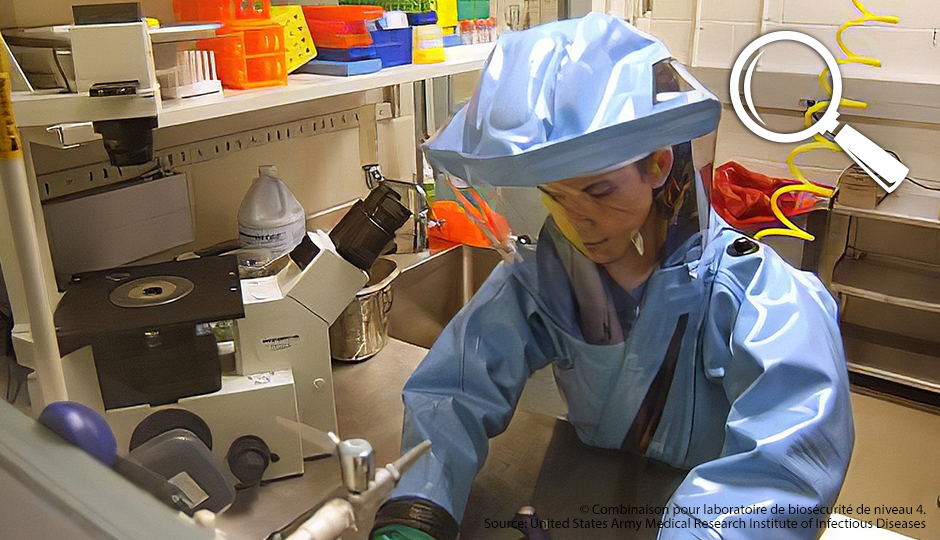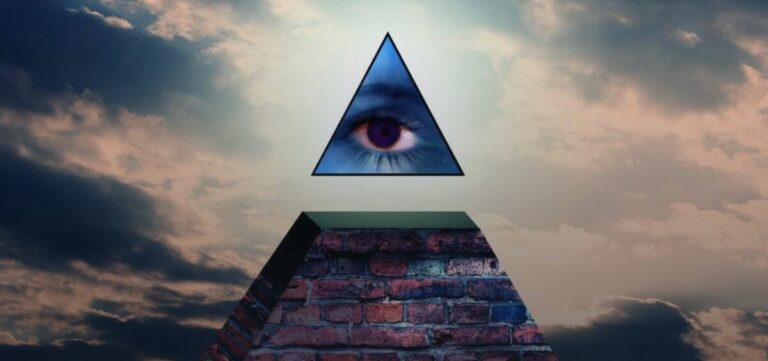Auteur : Agence Science Presse - Catherine Crépeau
Donald Trump and American media recently accused the Chinese virology laboratories in Wuhan to be responsible for the spread of the virus by letting it escape. We sort out what we know... from what is only a rumour.
Where the rumours come from
Two rumours coexist. According to the first one, the virus is a biological weapon created in a Chinese laboratory. This rumour doesn't add up, though, if we consider the genetics of the virus, which resembles a natural virus affecting bats, and doesn't carry any of the markers associated to genetical manipulation tools. The other rumour sustains that the virus would have been studied in a laboratory and would have escaped.
This last rumour dates back to an article published on February 15th on ResearchGate, a social network facilitating exchanges between scientists. Two Chinese scholars supported that the virus would have escaped from one of two virology laboratories in Wuhan. It has been heavily criticized by many, and even though the students had to remove the articles, it fueled the discussions and a lot of people jumped to conclusions. The rumour started to spread. The American investigative journalist Joshua Philipp promoted the theory in the documentary Tracking down the origin of the Wuhan coronavirus. This documentary was produced by Epoch Times, a newspaper that belongs to Falun Gong, a well-known anticommunist group. In the end, it was criticized for numerous mistakes.
Fox News and The Washington Post recently revived the rumour. Citing anonymous sources, Fox News put forward on April 15th that an employee from the institute would have voluntarily spread the virus, while a columnist working at The Washington Post said that the embassy of the United States in Beijing warned American authorities in 2018 of inadequate security measures in a laboratory where studies were conducted on the links between virus and bats.
For its part, American president Donald Trump has been pinpointing China for weeks for its role in the pandemic, saying that it did too little too late in telling the world about the dangerousness of the virus.
Those who don't believe it anymore
As of now, the American administration doesn't believe the virus was created in a laboratory. National Intelligence agreed on April 30th that the COVID-19 virus hadn't been created or modified genetically by humans while stating that the investigation on its origins was still under way. However, the White House and the Secretary of State Mike Pompeo kept bringing forward the theory that it could be a virus that would have escaped from a laboratory, and even implied an intentional leak.
The leak theory is challenged by many scientists. In a letter to the editor published on March 17th in Nature Medicine, five immunology and microbiology experts (three Americans, a British and an Australian) judged that « a given scenario in a laboratory » wasn't likely.
There was also an evaluation done by American radio NPR with a dozen of scientists who are studying virus genomes and laboratory accidents. According to them, an accidental release would have required ''a remarkable series of coincidences'' and deviations to the established experimental protocols. For example, researchers in laboratories work on ''deactivated'' viruses inside of biosecure hoods.
Vincent Racaniello, professor in microbiology and immunology at Columbia University and host of podcast This Week in Virology, asserts that had the virus escaped from a laboratory, it would have sickened researchers. Even Anthony Fauci, director of the National Institute of Allergy and Infectious Diseases, which we have seen often in the past weeks next to Donald Trump, intervened in an interview in National Geographic on May 4th to say that proofs of the natural character of the virus are solid.
To sum it up, even if it can’t be proven that the virus escaped from a laboratory, there is no good reason to believe that it happened. And the statement is even more unlikely in the measure that Wuhan's laboratories are being challenged. Even if there were deficiencies noted during inspections in 2018, it is equipped with the highest level of biosecurity (P4) established by international standards.
A consensus amongst researchers is that the SRAS-CoV-2 originated in bats.
The seafood market in Wuhan, where wild animals are sold, was identified at the beginning of the pandemic as a source of propagation, but there is, to this day, no conclusive evidence. A study published in the New England Journal of Medicine revealed that on the 425 first patients, only 45 % had links with the market and an analysis published on January 24th in The Lancet revealed that three of the four first cases known weren’t linked at all with the market.
Listen
- Journalists of The Washington Post column Fact Checker perform an analysis of the question.





